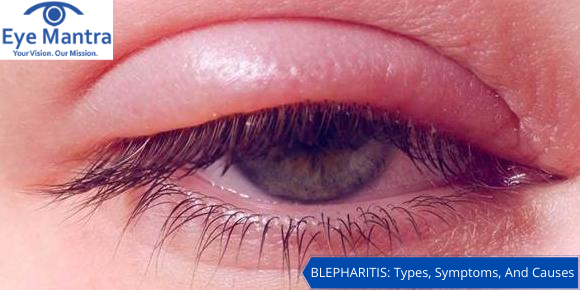Contents
What Is Blepharitis?
Blepharitis is an ocular condition that causes inflammation in the eyelids. The condition affects both eye on the edge of the eyelid. Blepharitis is described as a common eye condition in India. It is difficult to treat. However, it does not do any harm to the eyesight and is not contagious.
The eyes may seem red, swollen, sore, and also there can be a burning sensation around the eyelids. This condition is common with people having oily skin, dandruff, or rosacea. It is more visible in people who have more bacteria at the base of their eyelashes, resulting in the formation of dandruff-like flakes. People having problems with oil glands in their eyelids are also susceptible to blepharitis.
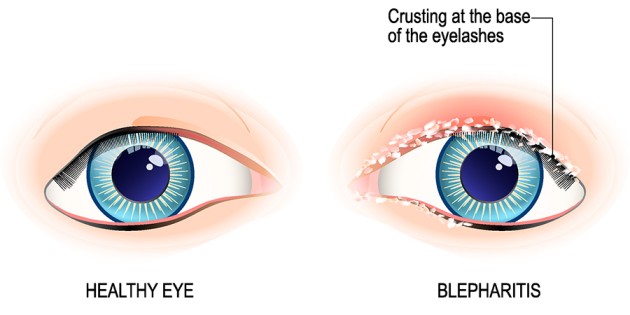
Types of Blepharitis
- Inflammation on Anterior eyelid: This kind of inflammation occurs outside of the eye around your eyelashes. The causes of anterior inflammation can be the presence of dandruff on your eyebrows or an allergic reaction to your eyes.
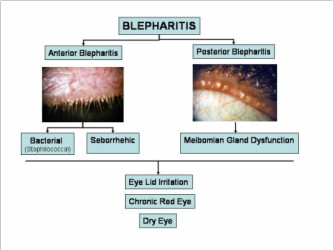
- Inflammation on Posterior eyelid: This inflammation occurs on the inner edge of the eyelids located close to your eye. Malfunctioning of the oil glands can be the reason behind this one.
Common Symptoms
Symptoms of Blepharitis are worse during the morning time. Some of the common symptoms may include-
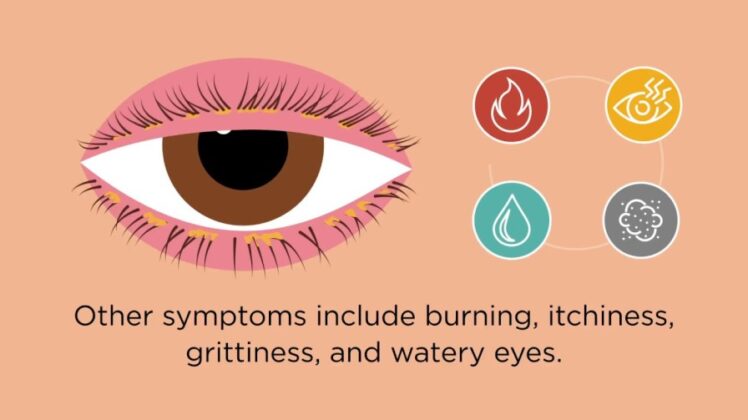
- Watery eyes
- Burning and stinging sensation in the eyes
- Greasy and itchy eyelids
- Red and swollen eyelids
- Flaking of the skin around the eyes
- Sticking eyelashes
- Frequent blinking
- Sensitivity to light
Causes of Blepharitis
An exact cause of Blepharitis is unknown. But here are some of the possible causes of this condition- “dandruff of the scalp and eyebrows (Seborrheic dermatitis), eye infection, clogging of the nearby oil glands, Rosacea (a skin condition of facial redness). Allergies are another reason for this disease as a person can have an allergic reaction to certain eye medications, solution of contact lens, etc. Eye makeup may also cause an allergic reaction that might also lead to Blepharitis. Eye mites and lice can also lead to this condition. Dryness may also encourage some of the common symptoms of Blepharitis.
Precautions For Blepharitis
There is no possible or known cure for Blepharitis. But there are some precautions and control measures that you can perform.
- Keep it warm: Take a clean cloth soaked in warm water, wait until it’s somewhat dry then place it over your closed eye for around one minute. Repeat the process as often as needed. It will help clean the flakes sticking around the eyelashes and to keep nearby oil glands from clogging. An electronic device is also available that uses heat and massage to unclog the oil glands around your eyelids. This treatment is only performed by the ophthalmologist.
- Scrub your eyelids: Dip a clean cloth or a cotton swab in baby shampoo diluted in warm water. Use it to scrub the eyelash area gently for 15 seconds.
- Consult your doctor– your ophthalmologist may prescribe you an antibiotic ointment for treating Blepharitis. The ointment will be applied to the base of your eyelash with your finger or a cotton swab. Apply it as prescribed by your doctor. Your doctor may also prescribe oral antibiotic medicine.
- Use Eye drops: The ophthalmologist may also suggest you treat the condition with artificial tears or steroids ear drops that may help with the redness, soreness, and dry eye. It can also work favorably with your oil glands.
- Maintain hygiene of eye and skin: Adopt hygienic habits for your eyes, skin, and hair. It will limit your risks for this disease. Wash your eyelashes regularly with warm water. Use antibacterial shampoo to wash your hair, scalp, and eyebrows. There are new anti-bacterial sprays that will limit the growth of Blepharitis.
- Keep your eyes lubricated: Artificial ear tears can help you get some relief.
- Prevent dandruff and mites: Dandruff contributes to Blepharitis, therefore using anti-dandruff shampoo might help.
Complications of Blepharitis
- Losing eyelashes: Eyelashes may fall out while suffering from this medical condition and start to grow abnormally.
- Skin problems: Skin around your eyelids may seem scarred due to the chronic nature of Blepharitis. Edges of the eyelashes might turn inwards or outwards.
- Tearing or dry eyes: The oil secretion from the oil glands may lead to tearing of the eyes in an excessive amount. Water, oil, and mucus come out in the form of tears. It makes the eye watery. This abnormal amount of tearing will make your eyelids moist all the time. And moist eyelids will irritate you and make your eyes either too dry or too watery.
- Stye: A stye can be explained as an infection that develops around the base of the eyelashes. It further results in a painful lump on the edge of your eyelid. Usually, it appears around the surface of the eyelid.
- Chalazion: If there is a blockage in one of the nearby oil glands Chalazion is most likely to appear. Due to this blockage, the oil glands are inflamed which results in the swelled and reddened eyelid. It can even turn into a contender bump.
- Chronic pink eye: Blepharitis can lead to recurrent pink eye. (conjunctivitis)
- Cornea injury: Constant irritation can cause a sore to develop around your cornea. If your eyes are not watery enough, it will simply increase your risk of getting a corneal infection.
Diagnosis of Blepharitis
Blepharitis can be treated through the following tests and procedures.
- Make an appointment with an ophthalmologist: The doctor may conduct a few tests and observe the condition through magnifying equipment.
- Swab testing: In some cases, swab testing might be performed by the doctors by taking a sample of the oil and crust that form around the eyelid. The sample taken can further be tested for bacteria, fungi, or evidence of an allergy.
Treatment of Blepharitis
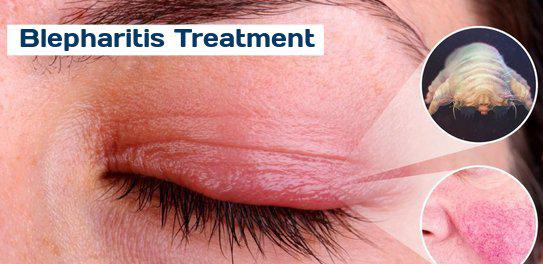
Self-hygiene measures will work in your favour to avoid or control this condition. If self-care measures do not prove to be effective then your doctor will prescribe you some medication for the treatment of the same–
- Medication for fighting infection: Antibiotics oral medication, as well as ointments, have proved very effective for Blepharitis. They provide much relief to the patients. Eye drops are another way to treat the condition.
- Medication for Inflammation: Steroid eye drops and ointment are the main sources for controlling the inflammation and for the treatment for people who do not respond to other therapies. Therefore, antibiotic and anti-inflammatory drugs can be prescribed by your doctor.
- Medications affecting the immune system: Topical Cyclosporine (Restasis) has been proved to provide relief to some of the symptoms of Blepharitis.

Alternative Medicine
There are no alternative medicines to Blepharitis that have the ability to ease the symptoms. But an omega-3 rich diet might help you with the condition in some way. Omega-3 rich food is these – salmon, tuna, trout, flaxseed, and walnuts.
Visit our website Eyemantra.To book an appointment call +91-9711115191. Or mail us at [email protected]. Our other services include Retina Surgery, Specs Removal, Cataract Surgery, and many more.
Related Blogs:

